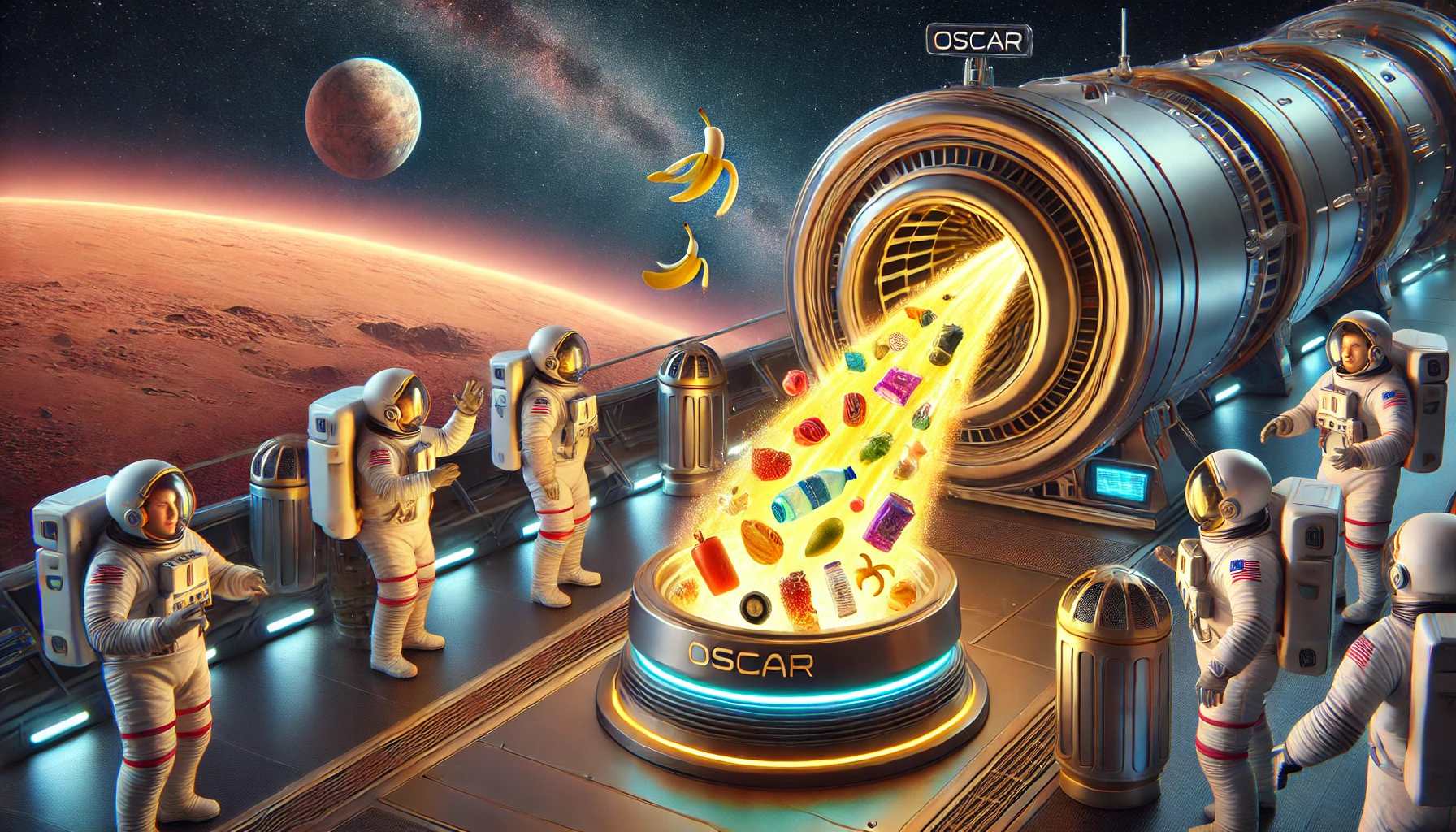From Trash to Thrusters: NASA’s Plan to Turn Space Garbage into Rocket Fuel

NASA's Latest Trashy Adventure
What if your leftovers, banana peels, and candy wrappers could help you zoom to Mars? Well, NASA is turning that sci-fi dream into reality with the Orbital Syngas Commodity Augmentation Reactor, or OSCAR for short. This brilliant system takes the trash produced on long-duration space missions and turns it into gas, which can potentially fuel spacecraft. Imagine astronauts casually tossing their empty snack bags into a high-tech recycler, and boom—rocket fuel is born!
Waste Not, Want Not: The Science Behind OSCAR
At the heart of OSCAR’s magic is the conversion of waste—yes, even human waste—into syngas, a combination of hydrogen, carbon monoxide, and other gases. This gas can be used for various purposes, from propulsion to generating electricity. The beauty of this system lies in its ability to take something that would otherwise just float in space (gross) and turn it into a valuable resource. NASA is all about efficiency, and with missions to Mars potentially lasting years, every bit of waste counts.
Propelling the Future: How Trash Can Power Spacecraft
OSCAR isn’t just a fancy trash compactor. It’s a glimpse into the future of space exploration. With missions planned for Mars, and perhaps beyond, astronauts will need to rely on sustainable systems to survive. Traditional rocket fuel might be hard to come by on the Red Planet, but trash? Oh, there will be plenty. The beauty of the Trash-to-Gas system is its potential to create a self-sufficient loop. You eat, you throw away, and your trash gets converted into the gas needed to keep the spacecraft cruising through the cosmos.
Why This Matters for Future Space Exploration
When we think of space missions, we tend to focus on the cool tech—like spacecraft, rovers, and those fancy astronaut suits. But behind the scenes, it's systems like OSCAR that will truly make interplanetary travel possible. Imagine how much more affordable missions can become if spacecraft can generate some of their own fuel. Not only will this reduce the payload at launch (less fuel needed to carry fuel!), but it also makes long-term missions like those to Mars more sustainable. Waste management is no joke when you're millions of miles from Earth.
Trash Talk: The Challenges Ahead
Of course, turning trash into gas isn’t as simple as tossing everything into a magic box. NASA has a lot to figure out—like how to make this system safe, reliable, and efficient for long-term use. Plus, there’s the challenge of handling different types of waste. After all, not all garbage is created equal. Food scraps, packaging, and, well, human waste, all require different methods of processing. But if anyone can figure it out, it’s NASA. After all, these are the folks who put a man on the moon using technology that’s less advanced than your smartphone.
How Close Are We to Turning Trash Into Thrusters?
NASA’s OSCAR system is still in the development phase, but the potential is undeniable. Tests have already shown that it’s possible to create syngas from waste materials, and now the challenge is to refine the process for practical use in space. The idea is to eventually have fully operational Trash-to-Gas systems on spacecraft headed for long missions, like a Mars expedition. Who knows, one day we might see astronauts proudly saying, 'My rocket runs on last night’s dinner!'
Could Space Trash Be the Key to Earth’s Energy Problems?
While OSCAR is designed for space missions, the technology could have potential applications here on Earth. Imagine a future where landfills are replaced by systems that convert waste into fuel, reducing the strain on our planet’s resources. Sure, we won’t need spacecraft-level propulsion here, but we do need cleaner energy alternatives. Trash-to-Gas could be part of the solution, helping to reduce our reliance on fossil fuels. Who knew that the key to solving Earth’s energy crisis might be sitting in our garbage bins?
What’s Next for NASA’s Trashy Masterpiece?
As NASA continues to refine the OSCAR system, the focus will be on ensuring it’s ready for space missions. That means more tests, more tweaks, and hopefully, more trash-to-thruster success stories. The ultimate goal is to have a fully operational system by the time we’re ready to send humans to Mars. It’s not just about getting there—it’s about staying there and thriving. And thanks to OSCAR, future astronauts might just have the power to turn their leftovers into liftoff.
Will Trash Be the Future of Space Fuel?
NASA’s OSCAR system is a testament to human ingenuity and the desire to make space travel more sustainable. With the potential to turn waste into fuel, it could revolutionize the way we think about propulsion. But the question remains: can this technology be perfected in time for the Mars missions? And beyond space, could Trash-to-Gas systems be the key to solving Earth’s energy challenges too? Only time will tell.
Now We’re Curious: Could Your Trash One Day Power Your Car?
With NASA turning trash into gas for space travel, the possibilities for this technology seem endless. Could we one day see similar systems here on Earth, powering our cars or homes? And if so, what would that mean for our future energy needs? Share your thoughts below—do you think trash could be the fuel of the future?



